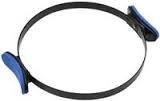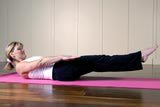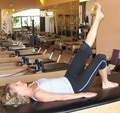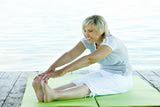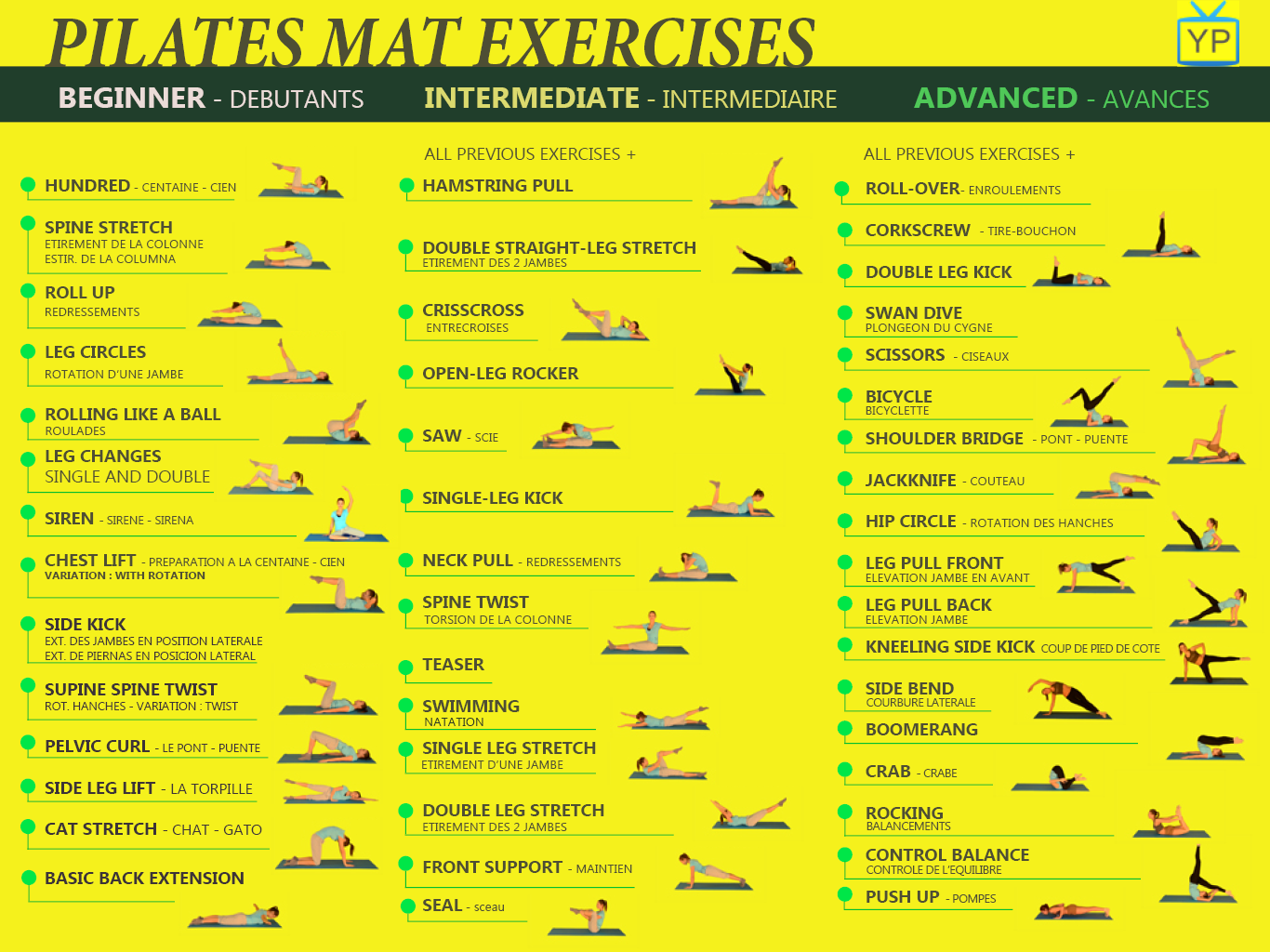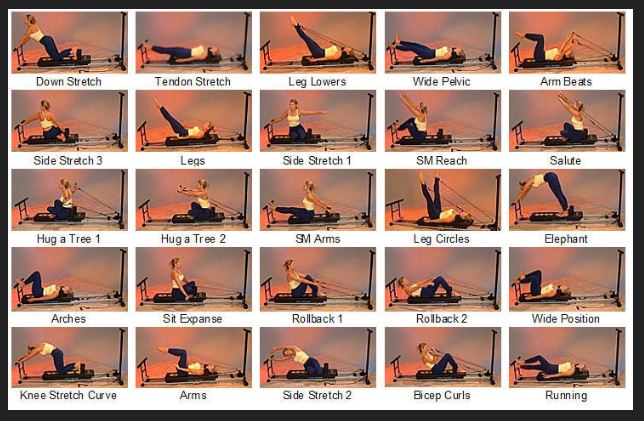Introduction
Pilates is a physical fitness system developed in the early 20th century by German-born Joseph Pilates who described his method as the art of controlled movements. If practiced with consistency, Pilates will improve flexibility, muscle strength, endurance, and motor control in the whole human body. It puts emphasis on developing a strong core, body alignment, coordination and balance. Pilates’ system allows for different exercises to be modified in range of difficulty and intensity from beginning to advanced as the body conditions and adapts to the exercises. At first, to the beginner, Pilates may seem easy, that it does not produce a good work out. However, as your proficiency in performing the exercises improves Pilates gets harder and harder. As your body changes and your skills increase, your ability to work with precision and at a higher intensity will change the nature of each exercise. It is said that there are no plateaus in Pilates. Pilates can be safely and successfully used for post-injury rehabilitation, post pregnancy conditioning, to serve as a safe environment to begin an exercise program for the older adult, and to enhance athletic abilities, especially in sports that require higher levels of muscle control, balance and coordination such as dance, gymnastics and figure skating.
Pilates’ system allows for different exercises to be modified in range of difficulty and intensity from beginning to advanced as the body conditions and adapts to the exercises. At first, to the beginner, Pilates may seem easy, that it does not produce a good work out. However, as your proficiency in performing the exercises improves Pilates gets harder and harder. As your body changes and your skills increase, your ability to work with precision and at a higher intensity will change the nature of each exercise. It is said that there are no plateaus in Pilates. Pilates can be safely and successfully used for post-injury rehabilitation, post pregnancy conditioning, to serve as a safe environment to begin an exercise program for the older adult, and to enhance athletic abilities, especially in sports that require higher levels of muscle control, balance and coordination such as dance, gymnastics and figure skating.
Six Principles of Pilates
1. Concentration
Pilates demands intense focus. It is important to concentrate on your entire body for controlled smooth movements because, in Pilates, the way that the exercises are done is more important than the exercises themselves.
2. Control
“Contrology” was Joseph Pilates preferred name for his method and it is based on the idea of muscle control. All exercises are done with control. The muscles work under control to lift against gravity and the resistance of the springs. Unlike other resistance type exercises, in Pilates, there is no ballistic or explosive type movements.
3. Centering
This principle is based on the concept that to control the movement of your body you must have a strong centre or core. The centre/core is the focal point of the Pilates Method. The group of muscles in the center of the body, the core, are the abdomen, lower and upper back, hips, buttocks, and inner thigh. This group of muscles are often referred to in Pilates as the “powerhouse”. It is important that all exercises or movements in Pilates begin from the centre and flow outward to the limbs.
4. Flow or efficiency of movement
Pilates aims for efficiency of movement by creating flow through the use of appropriate transitions from one exercise to another. This helps build muscular strength, endurance, motor control, balance and coordination.
5. Precision
Precision is essential to correct Pilates. The focus is on doing one precise and perfect movement and then transitioning to the next.
6. Breathing
Proper breathing is important in the Pilates method: full inhalation and complete exhalation; forced exhalation is the key to full inhalation. The Pilates breathing technique is described as a posterior lateral breathing, meaning that as you perform an exercise movement you are instructed to breathe deep into the back and sides of your rib cage. It is important to properly coordinate your breathing with each movement.
The Core/ The Powerhouse
Students are taught that by strengthening and learning to use their core properly when performing their Pilates movements they will learn to use their core or “powerhouse” throughout life’s daily activities. According to Pilates Principles, the powerhouse is the centre of the body and if strengthened, it offers a solid foundation for any movement.
The Powerhouse is activated effectively by contracting the abdominals, by drawing the navel back into the spine in a zipping-up motion, from the pubic bone to the breast bone.
Mat and Reformer Exercises
Mat and reformer are the two most common types of Pilates classes that people begin with. Either one will be beneficial for developing strength, endurance, balance and coordination.
1. Mat
A Pilates mat class is comprised of exercises done on a mat on the floor, without any special equipment. However, smaller pieces of Pilates equipment, such as the magic circle or exercise band, may be incorporated into a mat class. Mat classes offer the benefit of teaching exercises that can easily be practiced at home.
Magic Circle
5 Essential Pilate Mat Exercises
1. Hundreds
Description
1. Lie on your back with your legs bent in tabletop (knees bent with shins parallel to the floor)
2. Bring your head up with your chin tucked in and, using your abdominal muscles, curl your upper spine up so shoulder blades are off the floor.
3. Lift your arms off the floor and extend your legs. Your legs should be only be as low as you can go without shaking and without the lower spine pulling up off the mat.
4. Hold your position and take five short breaths in and five short breaths out (like sniffing in and puffing out). While doing so, move your arms in a controlled up and down manner – a small but dynamic pumping of the arms.
5. Do a cycle of 10 full breaths. Each cycle is five short in-breaths and then five short out-breaths. The arms pump up and down — about a 6-8 inch pump — in unison with your breath.
6. To finish, keep your spine curved as you bring your knees in toward your chest. Grasp your knees and roll your upper spine and head down to the floor.
2. Leg Circle
Description
1. Lie on your back with legs extended on the floor, arms by your sides.
2. Pull your abdominals in, anchoring the pelvis and shoulders to the floor. Extend one leg toward the ceiling. If your hamstrings are stretched, go ahead and lengthen the leg all the way up toward the ceiling. Do not lift your hip off the floor in the process. You may leave the knee slightly bent if your hamstrings are tight. It is more important that your hips stay stable and grounded on the mat than it is for your leg to be straight.
3. Cross the extended leg over toward the opposite hip. Drop the leg a few inches. Use control as you open the leg out and then sweep it around in a small circle back to center. Be sure to keep your shoulders and pelvis level and on the floor. This is more important than extending the leg fully or making big circles. It is in keeping the pelvis stable that your abdominals get their workout. No Rockin’ or Rollin.
3. Single Leg Stretch
Description
1. Lie on your back with your knees bent and your shins parallel to the floor (Table top position)
2. Pull your abs in, by pulling your bellybutton down toward your spine, as you curl your head and shoulders blades off the floor. As you curl up, your left leg extends straight and is lifted at a 45-degree angle. The right leg remains in tabletop position with the right hand grasping the right ankle and the left hand moving to the right knee.
3. Switch legs Now the left hand is at the left ankle and the right hand at the left knee.
4. Switch legs again. Bring the right leg in and extend the left leg.
The hand to leg coordination continues with the outside hand of the bent leg going to the ankle and the other hand moving to the inside of the bent knee.
5. Keep alternating bending the legs 10 times.
4. Spine Stretch
Description
1. Sit up tall on your sit bones. Your legs are extended about shoulder width apart, and your feet are flexed.
2. Extend your arms out in front of you, shoulder height.
Modification – place the fingertips on the floor in front of you between your legs.
3. Lengthen your spine by curling forward and finger tips moving toward your toes. On each inhale reach a little further as you enjoy the fullness of your stretch.
4. To release the stretch roll back up to sitting upright again.
Modifications -If your hamstrings are tight, sit on a little lift, like a folded towel. You can also try this exercise with your knees bent and feet flat on the floor
5. Roll Up
Description
1. Lie on the floor with your legs straight.
2. Lift your arms straight up over your head and back so that your finger tips are pointing to the wall behind you. This will be your beginning position.
3. Lift your arms up toward the ceiling As your arms pass your ears let the chin drop and head and upper spine join the motion to curl up.
4. Continue in one smooth motion to curl your body in an “up and over” motion toward your toes. Pull in your abs in and deepen the C-curve of your spine as you exhale and reach for your toes. Ideally the legs are kept straight throughout this exercise, however, a modification would be to allow the legs to bend, especially as you come up and reach toward the toes.
5. Pull the lower abs in, as you begin to uncurl the vertebrae by vertebrae and lie back down to the floor. Be sure to keep the legs on the floor and don’t let them fly up as you roll down. Keep your upper body curve as you roll down slowly, with control. The arms are still outstretched and following the natural motion of the shoulders as you roll down. Once your shoulders come to the floor, the arms go with the head as you continue to roll down to the mat.
6. Do up to six repetitions.
Note – The roll up is one continuous, controlled, flowing motion.
Overview of Pilate Mat EXERCISES
2. Reformer
The Pilates reformer sometimes known as a Pilates machine, is a large piece of exercise equipment. A combination of springs set at different tensions, and a student’s own body weight, create resistance during the exercises. The resistance that the reformer provides adds a weight bearing component to the reformer workout, beyond what the mat exercises offer.
The Reformer
Overview Of Reformer Exercises
Summary
Pilates is an excellent way to introduce non-ballistic exercises into an individual’s exercise routine. Its focus on improved flexibility, core strengthening, whole body muscle toning, balance and coordination makes it an excellent form of exercise for the older adult. The variety of exercises offered and the modifications for each exercise allows for changes in the intensity of the exercises as you become more proficient in them.
If you’d like more info please contact Mike.

